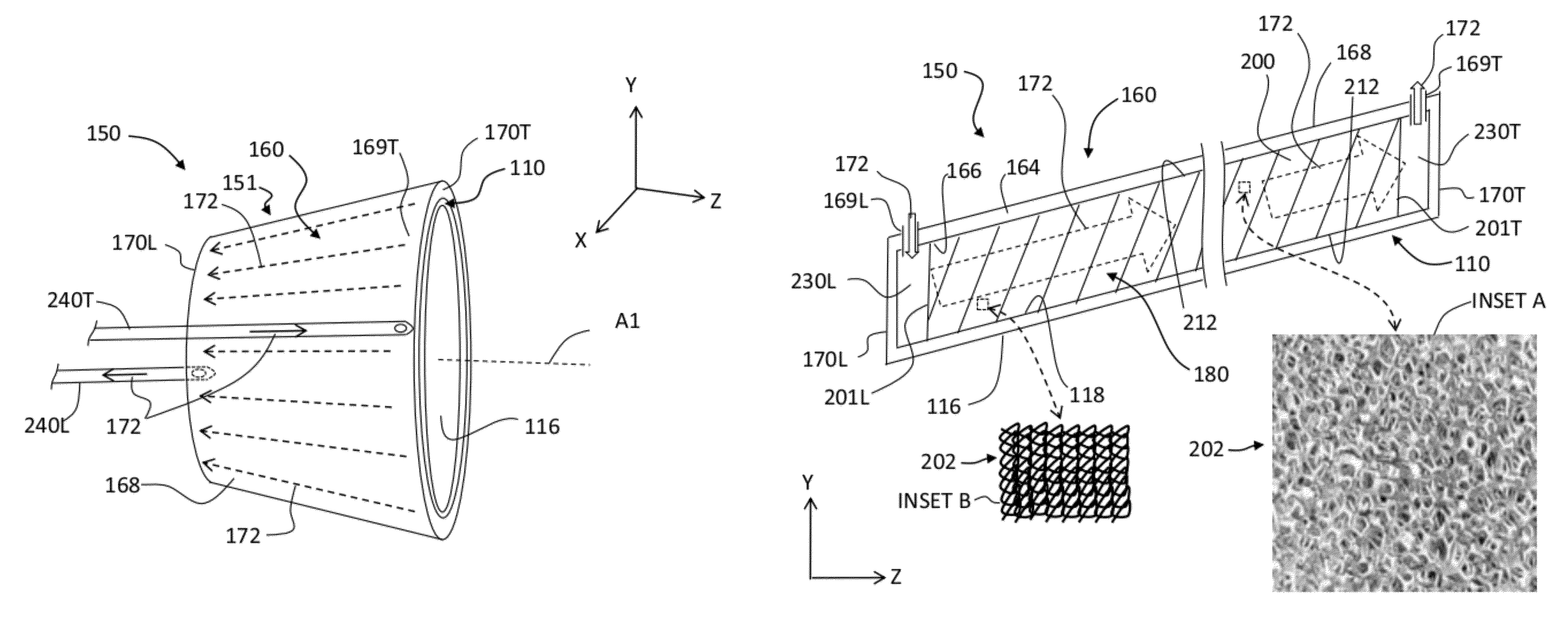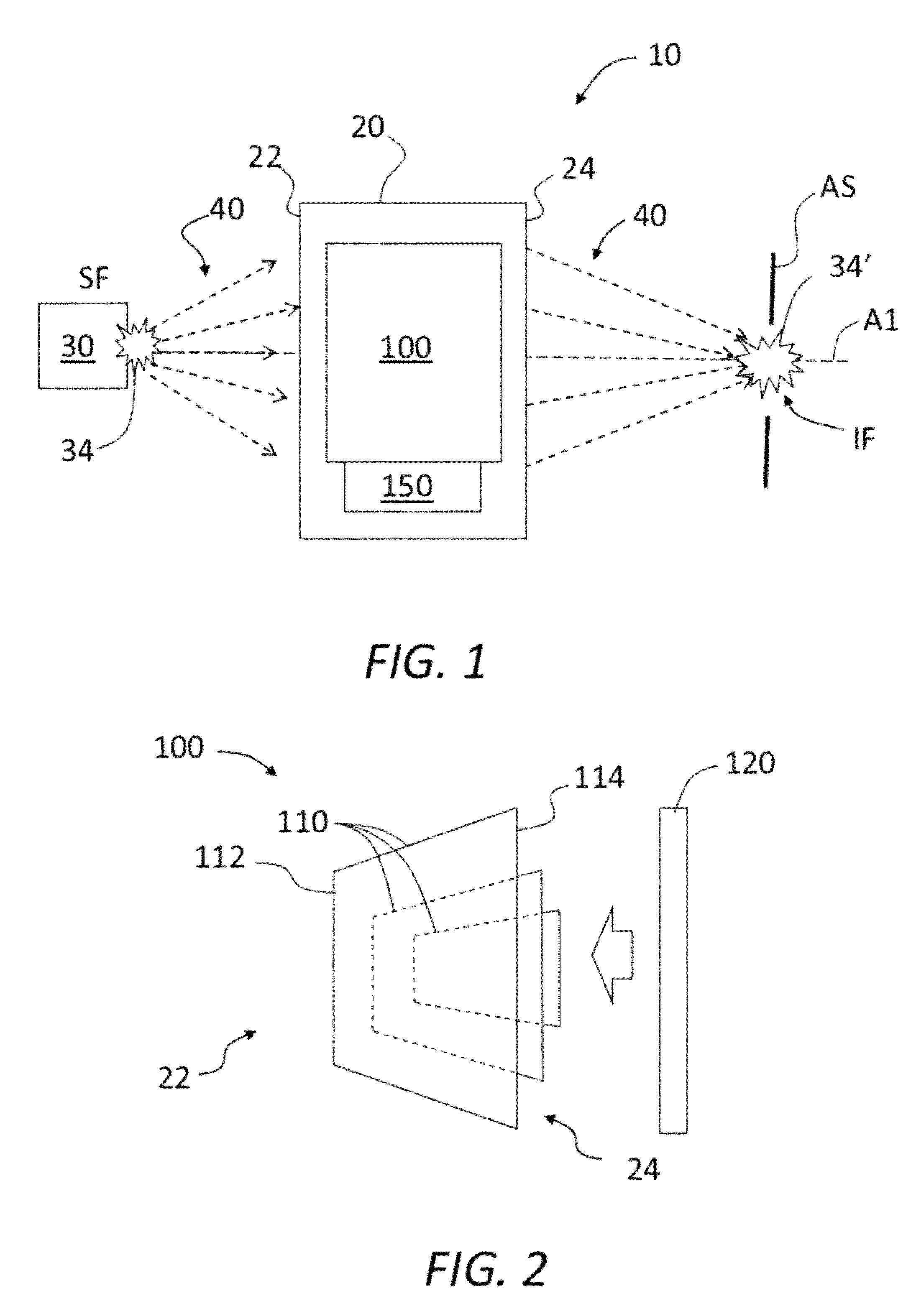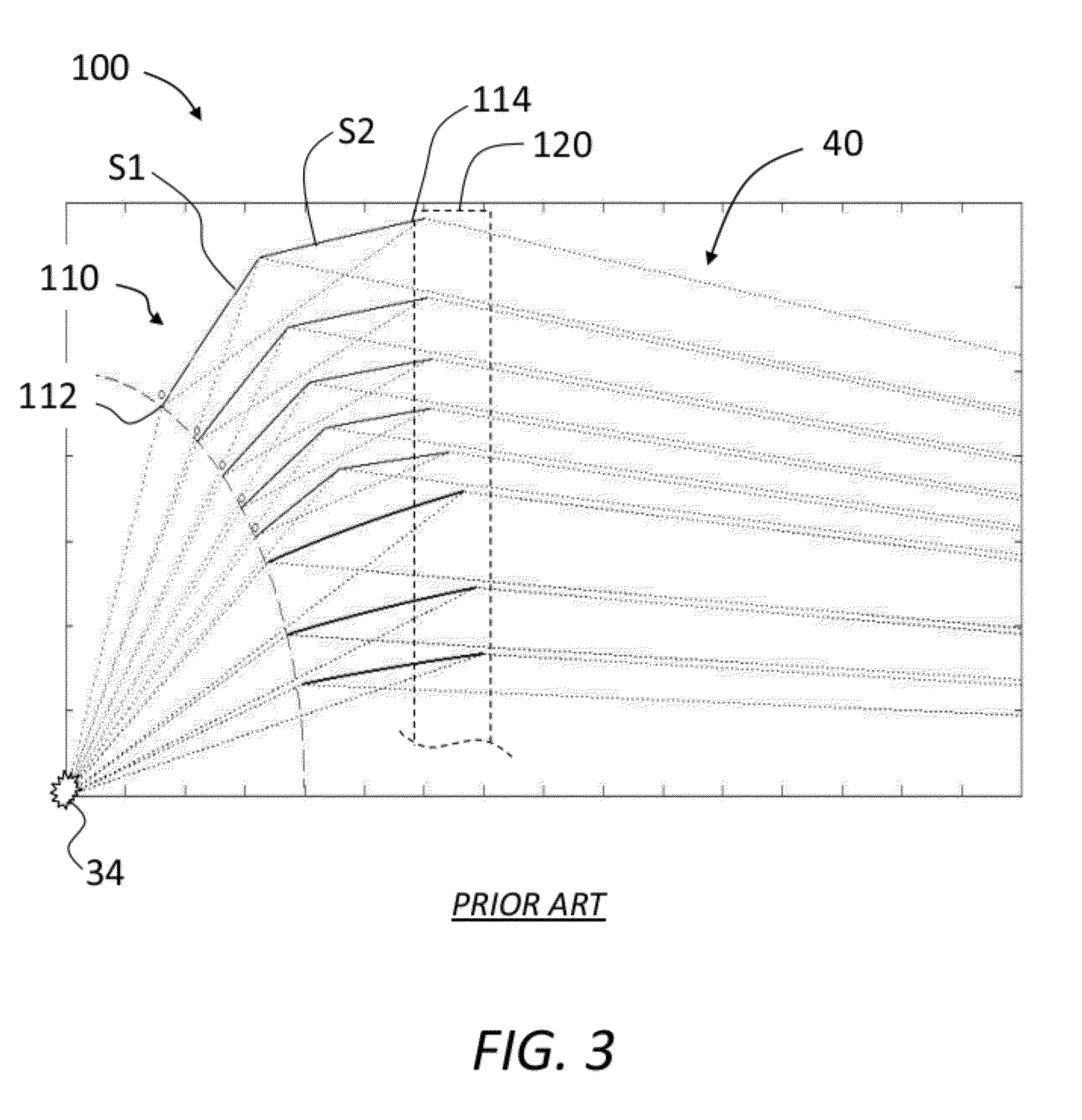Thermal management systems, assemblies and methods for grazing incidence collectors for EUV lithography
a technology of euv lithography and thermal management system, which is applied in the field of grazing incidence collectors, can solve the problems of substantial thermal load on one or more gic mirror shells and compromise of stability, and achieve the effects of avoiding spatial modulation of gic mirror shells, and enabling gic mirror thermal stability
- Summary
- Abstract
- Description
- Claims
- Application Information
AI Technical Summary
Benefits of technology
Problems solved by technology
Method used
Image
Examples
Embodiment Construction
[0061]FIG. 1 is schematic diagram of an example EUV source-collector module or SOCOMO 10 that has a central axis A1 and that includes a GIC mirror system 20 arranged along the central axis A1. GIC mirror system 20 has an input end 22 and an output end 24. GIC mirror system 20 also includes GIC mirror assembly 100 and a GIC shell cooling assembly 150 arranged in operative relation thereto, and which are discussed in greater detail below.
[0062]SOCOMO 10 includes an EUV radiation source system 30 arranged along central axis A1 adjacent input end 22 of GIC mirror system 20 and that generates an EUV radiation source 34 at a source focus SF. EUV radiation source 34 emits EUV radiation 40 having a wavelength of nominally 13.5 nm. Example EUV radiation source can be a laser-produced plasma (LPP) radiation source or a discharge-produced plasma (DPP) radiation source.
[0063]GIC mirror system 20 is configured to receive from EUV radiation source 34 a portion of EUV radiation 40 and collect the ...
PUM
 Login to View More
Login to View More Abstract
Description
Claims
Application Information
 Login to View More
Login to View More - R&D
- Intellectual Property
- Life Sciences
- Materials
- Tech Scout
- Unparalleled Data Quality
- Higher Quality Content
- 60% Fewer Hallucinations
Browse by: Latest US Patents, China's latest patents, Technical Efficacy Thesaurus, Application Domain, Technology Topic, Popular Technical Reports.
© 2025 PatSnap. All rights reserved.Legal|Privacy policy|Modern Slavery Act Transparency Statement|Sitemap|About US| Contact US: help@patsnap.com



